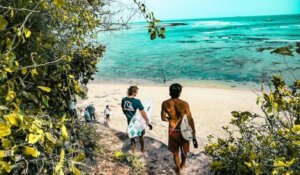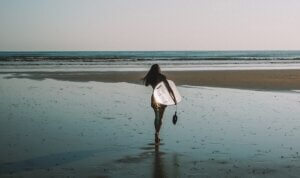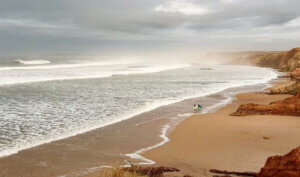New Zealand undoubtedly has one of the most stunning coastlines, boasting over 15,000 kilometers of diverse beaches and fantastic surf spots — all without the usual crowds. With no location in the country more than 130 km from the sea, you’re always close to a beautiful surfer’s paradise type of coastline. Offering reliable waves throughout the year, thanks to its varied terrain and climate.
Indeed, surfing New Zealand can be exciting, but how do you make the most of your time in the country’s beautiful waters? Here are 6 essential tips to amp up your adventure in this surfer’s haven.
1. Choose the Right Season and Location
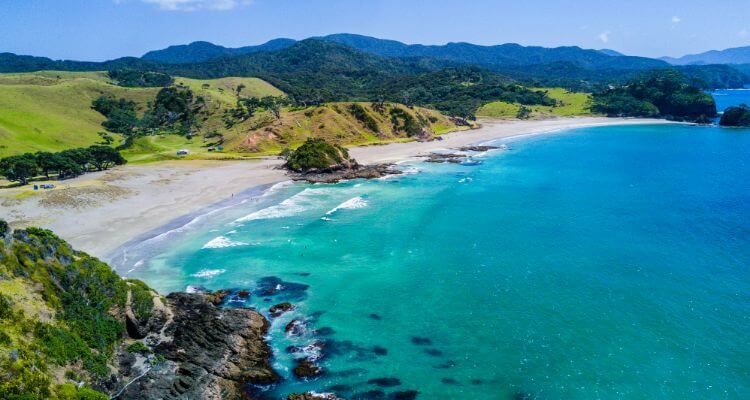
Timing is crucial when you’re looking to ride some smooth waves in New Zealand, and the key is choosing the right season. While the surf scene here is a year-round affair, the prime surf season depends on your surfing preferences or style, and where you plan to surf.
The best months to surf on the North Island’s east coast are between November and March, when the cyclone season brings consistent waves and a thrilling surf experience. If you’re heading to the South Island, you’re in for a treat with its reliable surf throughout the year.
But while New Zealand’s South Island waves are more consistent, you’ll come across fewer known surf spots because getting to the breaks can be a bit tricky.
Meanwhile, the North Island turns up the warmth, offering surfers a sun-kissed surfing haven in addition to awesome waves during the summer months from December to February. You can even catch some waves without a wetsuit if you choose to surf on the Taranaki coast, Raglan, or north of Auckland.
That said, here’s something to keep in mind:
The weather in New Zealand can be unpredictable sometimes, and conditions can vary, even during the summer months. So it’s usually best to be prepared for unexpected changes.
In a nutshell, New Zealand has a perfect wave season all throughout the year. The only thing you have to do is pick the season and location that offers the experience you’re looking forward to ― whether it’s consistent waves or warmer waters.
2. Understand the Water Conditions
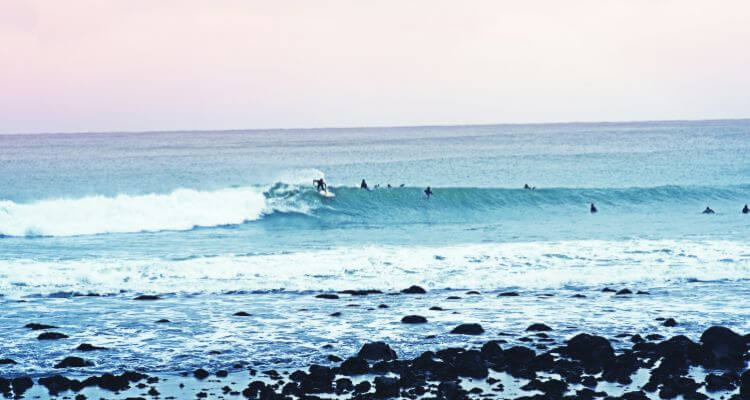
When surfing in New Zealand, you want to watch for rips and currents, which can make the waters here a bit tricky. You don’t want to get caught in these natural phenomena, so stay informed about tidal movements, and if caught in a rip, remember to remain calm and signal for assistance if needed.
Additionally, encountering marine life is pretty common in New Zealand’s pristine waters. And while this can be awe-inspiring, it’s super important to approach these creatures cautiously.
Here are some general safety tips to keep in mind regarding the water conditions:
- Respect the natural habitat of marine creatures, maintain a safe distance when you encounter them, and avoid sudden movements.
- Check the local surf conditions, tide charts, and potential hazards before hitting the waves.
- Stay updated on weather forecasts and be mindful of changing conditions that may affect the surf.
- Surfing is more fun and safer with friends, so find a surf buddy so you can keep an eye on each other and be ready to assist in case of emergencies.
3. Know the Best Surf Spots
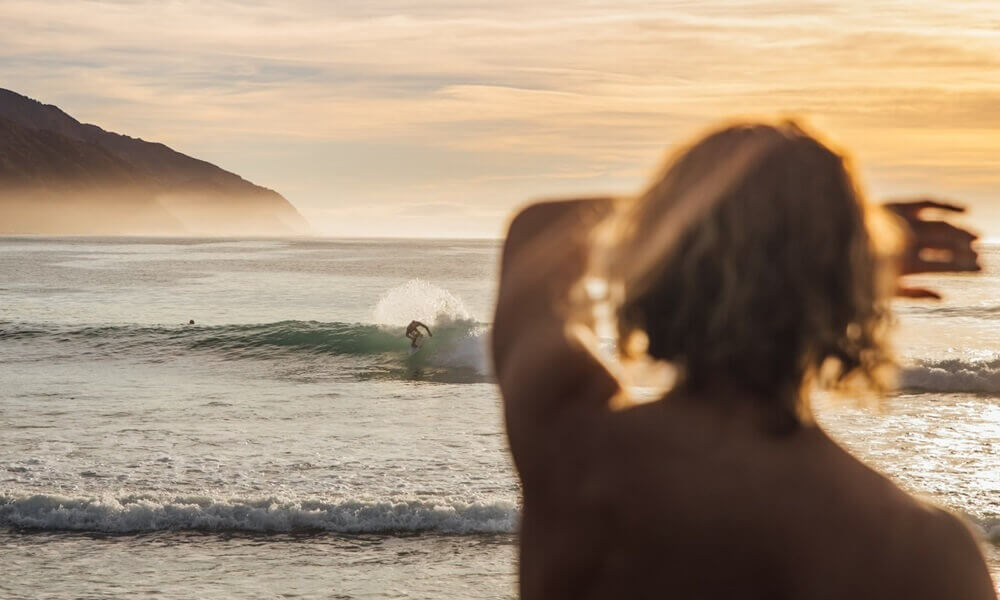
When it comes to surfing in New Zealand, understanding the lay of the land is super important, as it contributes to the overall surfing experience. Here, there are two very different coastlines, the East Coast and West Coast, each boasting unique characteristics:
East Coast
Surf spots in this part of the country have diverse surfing conditions, including long beach breaks and reef spots. The swells here usually have a shorter range, resulting in smaller waves.
Some popular East Coast surf gems with a mix of waves catering to all levels of surf enthusiasts include:
- Whale Bay: Nestled along the stunning Tutukaka Coast on the East Coast of New Zealand’s North Island, Whale Bay offers a captivating blend of pristine landscapes and surf-friendly waves, making it a must-visit destination for those seeking both coastal serenity and thrilling surf experiences.
- Whangamata Bar: Dubbed the “Jewel of the Pacific,” this well-known surf break offers some of New Zealand’s best surf with a long barreling section and epic wall conditions.
- Wainui Beach: Situated in Gisborne, Wainui Beach is known for its consistent waves and long sandy stretches, providing options for surfers of various skill levels.
- Mount Maunganui, Bay of Plenty: Known for insanely long, white waves, providing a diverse surf experience.
West Coast
The West Coast is renowned for remote surf spots and stunning settings, with challenging reefs and long point breaks. The swell in this part of the country is usually in the 10 to 17-second range, resulting in larger and tougher waves.
A few must-visit surf spots on New Zealand’s West Coast include:
- Shipwreck Bay: Located on the West Coast of the North Island of New Zealand, near Ahipara. It is known for its stunning scenery and excellent surf conditions.
- Fitzroy Beach: Lining the shores of the West Coast near New Plymouth is this captivating surf spot with its distinctive black sand and reliable waves. Whether you’re a beginner or an experienced surfer, this coastal gem welcomes you with its perfect blend of natural beauty and surf-friendly conditions.
- Piha Beach: Located near Auckland and offering both left and right-hand breaks, Piha is known for its black sand, powerful waves, and iconic Lion Rock.
- Manu Bay: Located near Raglan, Manu Bay is known for its long, consistent left-hand point break.
4. Learn From the Locals
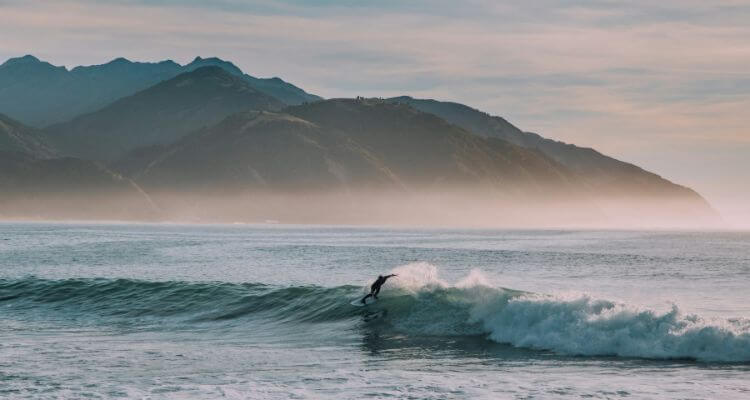
New Zealand is renowned for its incredibly friendly surf community, where locals are more than happy to share the waves with anyone who respects the people and the surfing etiquette.
Even complete beginners can learn the ropes of surfing from friendly locals. And speaking of learning to surf, the best place to get the hang of it is a surf school or camp with experienced local instructors.
In New Zeland, two standout surf schools readily come to mind for learning from experienced locals:
- Surf N Stay New Zealand: This surf school offers surf lessons, yoga classes, accommodation, and everything you’ll need for a thrilling surf adventure in Whangamata.
- Awarua Guides: This surf camp provides tailor-made adventures with access to a range of Fiordland’s pristine wilderness when you want a surf break as well as good surf destinations in remote New Zealand.
5. Gear Up Properly
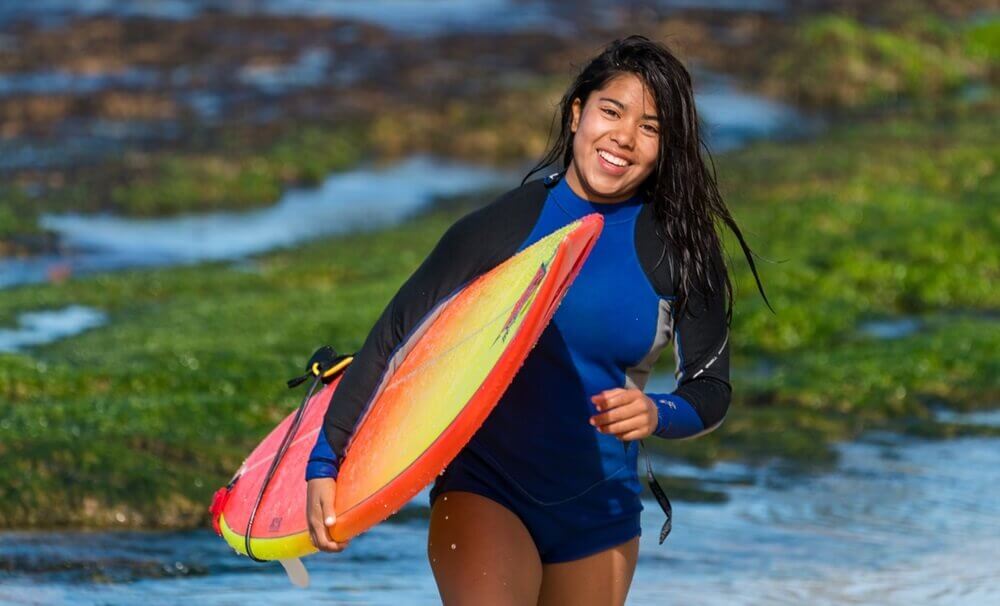
New Zealand’s sun can be harsh year-round, especially in summer. For this reason, you want to shield up properly:
- Apply water-resistant SPF 30+ sunscreen 20 minutes before sun exposure. Reapply every 2 hours or more if sweating or swimming, as always when surfing sink paste is a good idea for the face.
- Protect your eyes with sunglasses and the right hat to keep the sun at bay.
- Clothing is your best protection against the blazing sun, so cover up to protect your skin, especially during the summer.
6. Explore Various Coastal Activities
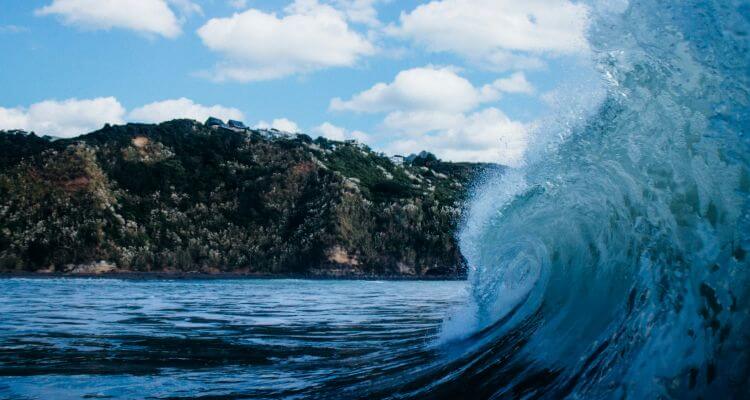
While surfing lessons and tours are exciting ways to relish the thrill of New Zealand’s stunning waters, there are plenty of other coastal activities you can explore.
Kite surfing, windsurfing, and surf kayaking offer exhilarating experiences. If you’re looking to venture beyond the waves, you might want to try other coastal offerings, like fishing along the East Coast. You can go on a sea kayaking adventure to explore coastal nooks and crannies where encounters with penguins, seals, and other wildlife are likely.
For a more leisurely coastal adventure, take a beach break and treat yourself to a sun-soaked day of bathing in crystal-clear waters. If you want a broader experience, hop on boat cruises from the Bay of Islands to Fiordland.
Alternatively, take a scenic drive along the Surf Highway or Twin Coast Discovery routes for a picturesque trip along the coast.


